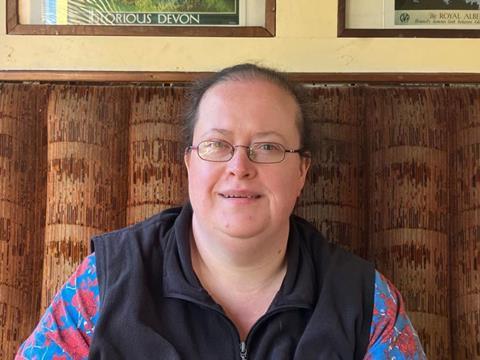
There are almost 87 million disabled people living in Europe. That’s 25% of the population. No two people are disabled in exactly the same way, and many have hugely varying experiences. So, what issues can disabled people encounter with packaging, and what can you do to make sure yours works for everyone?
Sarah is a member of the RiDC (Research Institute for Disabled Consumers) Consumer Panel. She lives in Devon in the UK, and fifteen years ago began to experience increased loss of feeling in her hands and lower limbs. Now she lives with complex disabilities, including significant neuropathy in her hands and legs – which means she now struggles to do basic tasks.
Sarah loves cooking, but has found that the kitchen has become a battleground – sometimes with harmful injuries to show for it. All could be improved, she says, by designing packaging that is easier to use.
She says: “Until a few years ago, I never thought that the simple task of making a cup of tea would end in scalds on my stomach and feet. Even opening a jam jar has led to cuts and glass in my foot. Simple tasks that end, not just in frustration but injuries on an almost daily basis.”
Daily struggles
“You rarely hear about the struggles someone with a disability or birth defect has just to open that box of cereal or bag of pasta - sometimes it feels like an Olympic sport or a Mensa challenge.
“Often, there is an outer plastic film that has to be cut or pierced to enter the package but then there can be up to two more layers of packaging to get through. The final inner container/bag is often the worst layer as you often have to scramble a tool of some sort.”
“At home, living with these issues daily, you’ll likely have a safe tool on hand, but if you’re out and need to access refreshments or medical aid/medication it can be hard to find something. My favourite go-to tools have been keys/pens/sharp edges of my broach or other jewelry, or the pin on the strap of a watch.”
Impact on life
“I miss the independence of knowing I can make a meal without asking for assistance. I’d love to be able to spoil my husband or surprise him with a nice meal without him having to assist in some way. It is also a regular occurrence that he has to clean up glass or broken crockery around me when things skid off the worktop onto the floor and glass ends up everywhere. Usually with me in the middle of the mess trying to balance with my crutches.”
What can be done?
Sarah suggests that manufacturers put themselves in her shoes, quite literally, to gain insights.
“It’s simple but you could try pinning one hand behind your back and try to open something. Or tape up your fingers so you can’t feel the edges of the box where to open it.”
Engaging disabled people, enlisting them to test your packaging and listening to their feedback and suggestions is also key. Sarah takes part in accessibility research and finds the collaborative nature of the projects very rewarding:
“When I was invited by RiDC to help with research on food packaging I felt so much less alone, less anxious, and for first time in months felt I was helping others again.”












2 Readers' comments